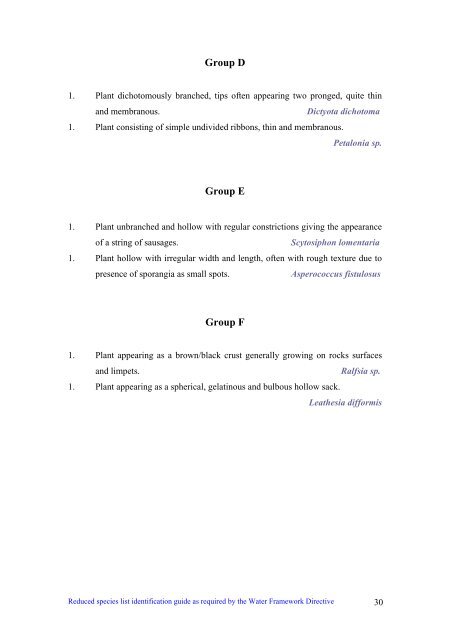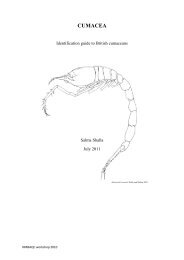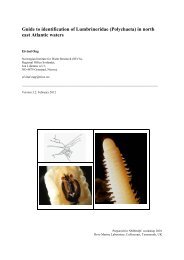s A Field Guide to the British Seaweeds - NMBAQC
s A Field Guide to the British Seaweeds - NMBAQC
s A Field Guide to the British Seaweeds - NMBAQC
Create successful ePaper yourself
Turn your PDF publications into a flip-book with our unique Google optimized e-Paper software.
Group D<br />
1. Plant dicho<strong>to</strong>mously branched, tips often appearing two pronged, quite thin<br />
and membranous. Dictyota dicho<strong>to</strong>ma<br />
1. Plant consisting of simple undivided ribbons, thin and membranous.<br />
Group E<br />
Petalonia sp.<br />
1. Plant unbranched and hollow with regular constrictions giving <strong>the</strong> appearance<br />
of a string of sausages. Scy<strong>to</strong>siphon lomentaria<br />
1. Plant hollow with irregular width and length, often with rough texture due <strong>to</strong><br />
presence of sporangia as small spots. Asperococcus fistulosus<br />
Group F<br />
1. Plant appearing as a brown/black crust generally growing on rocks surfaces<br />
and limpets. Ralfsia sp.<br />
1. Plant appearing as a spherical, gelatinous and bulbous hollow sack.<br />
Lea<strong>the</strong>sia difformis<br />
Reduced species list identification guide as required by <strong>the</strong> Water Framework Directive 30




